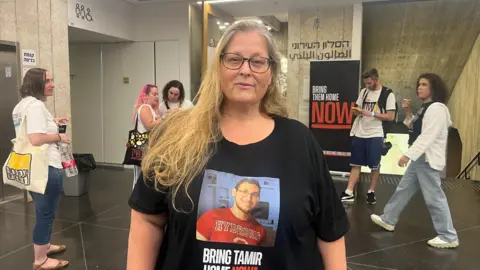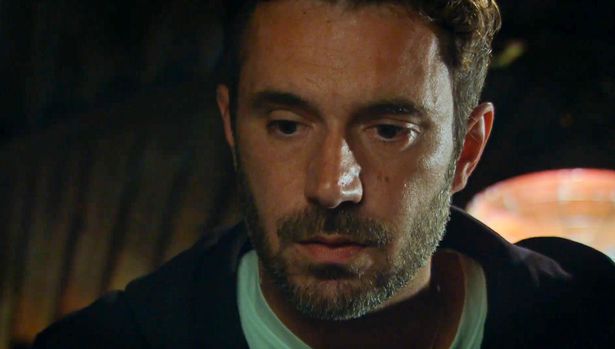WASHINGTON — The hurried push to revise California’s congressional districts has drawn national attention, large sums of money, and renewed hope among Democrats that the effort may help counter a wave of Republican redistricting initiatives instigated by President Trump.
But if Democrats succeed in California, the question remains: Will it be enough to shift the balance of power in Congress?
To regain control of the House, Democrats need to flip three Republican seats in the midterm elections next year. That slim margin prompted the White House to push Republicans this summer to redraw maps in GOP states in an effort to keep Democrats in the minority.
Texas was the first to signal it would follow Trump’s edict and set off a rare mid-decade redistricting arms race that quickly roped in California, where Gov. Gavin Newsom devised Proposition 50 to tap into his state’s massive inventory of congressional seats.
Californians appear poised to approve the measure Tuesday. If they do, Democrats potentially could gain five seats in the House — an outcome that mainly would offset the Republican effort in Texas that already passed.
While Democrats and Republicans in other states also have moved to redraw their maps, it is too soon to say which party will see a net gain, or predict voter sentiment a year from now, when a lopsided election in either direction could render the remapping irrelevant.
GOP leaders in North Carolina and Missouri approved new maps that likely will yield one new GOP seat in each, Ohio Republicans could pick up two more seats in a newly redrawn map approved Friday, and GOP leaders in Indiana, Louisiana, Kansas and Florida are considering or taking steps to redraw their maps. In all, those moves could lead to at least 10 new Republican seats, according to experts tracking the redistricting efforts.
To counter that, Democrats in Virginia passed a constitutional amendment that, if approved by voters, would give lawmakers the power and option to redraw a new map ahead of next year’s election. Illinois leaders are weighing their redistricting options and New York has filed a lawsuit that seeks to redraw a GOP-held district. But concerns over legal challenges already tanked the party’s efforts in Maryland and the potential dilution of the Black vote has slowed moves in Illinois.
So far, the partisan maneuvers appear to favor Republicans.
“Democrats cannot gerrymander their way out of their gerrymandering problem. The math simply doesn’t add up,” said David Daly, a senior fellow at the nonprofit FairVote. “They don’t have enough opportunities or enough targets.”
Complex factors for Democrats
Democrats have more than just political calculus to weigh. In many states they are hampered by a mix of constitutional restrictions, legal deadlines and the reality that many of their state maps no longer can be easily redrawn for partisan gain. In California, Prop. 50 marks a departure from the state’s commitment to independent redistricting.
The hesitancy from Democrats in states such as Maryland and Illinois also underscores the tensions brewing within the party as it tries to maximize its partisan advantage and establish a House majority that could thwart Trump in his last two years in office.
“Despite deeply shared frustrations about the state of our country, mid-cycle redistricting for Maryland presents a reality where the legal risks are too high, the timeline for action is dangerous, the downside risk to Democrats is catastrophic, and the certainty of our existing map would be undermined,” Bill Ferguson, the Maryland Senate president, wrote in a letter to state lawmakers last week.
In Illinois, Black Democrats are raising concerns over the plans and pledging to oppose maps that would reduce the share of Black voters in congressional districts where they have historically prevailed.
“I can’t just think about this as a short-term fight. I have to think about the long-term consequences of doing such a thing,” said state Sen. Willie Preston, chair of the Illinois Senate Black Caucus.
Adding to those concerns is the possibility that the Supreme Court’s conservative majority could weaken a key provision of the landmark Voting Rights Act and limit lawmakers’ ability to consider race when redrawing maps. The outcome — and its effect on the 2026 midterms — will depend heavily on the timing and scope of the court’s decision.
The court has been asked to rule on the case by January, but a decision may come later. Timing is key as many states have filing deadlines for 2026 congressional races or hold their primary election during the spring and summer.
If the court strikes down the provision, known as Section 2, advocacy groups estimate Republicans could pick up at least a dozen House seats across southern states.
“I think all of these things are going to contribute to what legislatures decide to do,” said Kareem Crayton, vice president of the Brennan Center for Justice. The looming court ruling, he added, is “an extra layer of uncertainty in an already uncertain moment.”
Republican-led states press ahead
Support for Prop. 50 has brought in more than $114 million, the backing of some of the party’s biggest luminaries, including former President Obama, and momentum for national Democrats who want to regain control of Congress after the midterms.
In an email to supporters Monday, Newsom said fundraising goals had been met and asked proponents of the effort to get involved in other states.
“I will be asking for you to help others — states like Indiana, North Carolina, South Carolina and more are all trying to stop Republican mid-decade redistricting efforts. More on that soon,” Newsom wrote.
Indiana Republican Gov. Mike Braun called a special session set to begin Monday, to “protect Hoosiers from efforts in other states that seek to diminish their voice in Washington and ensure their representation in Congress is fair.”
In Kansas, the GOP president of the state Senate said last week that there were enough signatures from Republicans in the chamber to call a special session to redraw the state’s maps. Republicans in the state House would need to match the effort to move forward.
In Louisiana, Republicans in control of the Legislature voted last week to delay the state’s 2026 primary elections. The move is meant to give lawmakers more time to redraw maps in the case that the Supreme Court rules in the federal voting case.
If the justices strike down the practice of drawing districts based on race, Florida Gov. Ron DeSantis, a Republican, has indicated the state likely would jump into the mid-decade redistricting race.
Shaniqua McClendon, head of Vote Save America, said the GOP’s broad redistricting push underscores why Democrats should follow California’s lead — even if they dislike the tactic.
“Democrats have to be serious about what’s at stake. I know they don’t like the means, but we have to think about the end,” McClendon said. “We have to be able to take back the House — it’s the only way we’ll be able to hold Trump accountable.”
In New York, a lawsuit filed last week charging that a congressional district disenfranchises Black and Latino voters would be a “Hail Mary” for Democrats hoping to improve their chances in the 2026 midterms there, said Daly, of FairVote.
Utah also could give Democrats an outside opportunity to pick up a seat, said Dave Wasserman, a congressional forecaster for the nonpartisan Cook Political Report. A court ruling this summer required Utah Republican leaders to redraw the state’s congressional map, resulting in two districts that Democrats potentially could flip.
Wasserman described the various redistricting efforts as an “arms race … Democrats are using what Republicans have done in Texas as a justification for California, and Republicans are using California as justification for their actions in other states.”
‘Political tribalism’
Some political observers said the outcome of California’s election could inspire still more political maneuvering in other states.
“I think passage of Proposition 50 in California could show other states that voters might support mid-decade redistricting when necessary, when they are under attack,” said Jeffrey Wice, a professor at New York Law School where he directs the New York Elections, Census & Redistricting Institute. “I think it would certainly provide impetus in places like New York to move forward.”
Similar to California, New York would need to ask voters to approve a constitutional amendment, but that could not take place in time for the midterms.
“It might also embolden Republican states that have been hesitant to redistrict to say, ‘Well if the voters in California support mid-decade redistricting, maybe they’ll support it here too,’” Wice said.
To Erik Nisbet, the director of the Center for Communications & Public Policy at Northwestern University, the idea that the mid-decade redistricting trend is gaining traction is part of a broader problem.
“It is a symptom of this 20-year trend in increasing polarization and political tribalism,” he said. “And, unfortunately, our tribalism is now breaking out, not only between each other, but it’s breaking out between states.”
He argued that both parties are sacrificing democratic norms and the ideas of procedural fairness as well as a representative democracy for political gain.
“I am worried about what the end result of this will be,” he said.
Ceballos reported from Washington, Mehta from Los Angeles.













